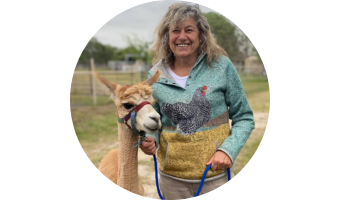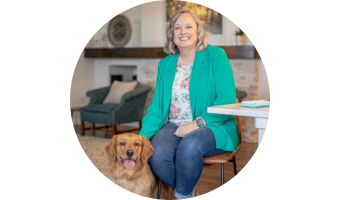
The Pet Sitters International (PSI) World Educational Conference is always a highlight of the year, bringing together pet care professionals from across the globe to learn, connect, and grow. This year’s event was no exception. With sessions covering everything from financial stability to feline behavior, attendees left with fresh ideas and practical strategies to bring back to their businesses.
To make it easy to revisit the key lessons, we’ve put together a three-part recap series highlighting the conference’s biggest takeaways:
- Part 1: Business Growth & Strategy
- Part 2: Safety, Liability & Resilience
- Part 3: Pets, People & Best Practices
Whether you’re a solo sitter or managing a growing team, these insights offer guidance on building a pet care business that’s smart, sustainable, and full of heart.
Part 1: Building Smarter, Stronger Pet Care Businesses
At this year’s PSI Conference, several speakers dove deep into what it takes to grow smart—not just fast. From cash flow to decision-making frameworks to leveraging the power of industry connections, attendees walked away with tools to build sustainable businesses that align with their goals.
This section highlights how to make strategic choices, manage your money wisely, and tap into the pet care community to grow stronger together.

Strategic Decision-Making with Michelle Kline
At PSI 2025, Michelle Kline—founder of DogCo and growth coach to pet-care businesses—delivered a high-energy masterclass on making better, faster decisions. She’s walked the walk: she scaled a daily dog-walking operation to 600 active clients during the pandemic, then sold to focus on helping other pet pros scale. Her thesis: our time, energy, and cash are limited. Strategy is the art of deciding what not to do so your best ideas actually win.
Below is a practical recap—part story, part playbook—you can use to steer your business with more clarity and less second-guessing.
Why Strategy (Not Just Hustle) Wins
Michelle doesn’t knock heart-led entrepreneurship—she celebrates it. But relying on “gut only” can send you on scenic detours. Strategy narrows the path so your hustle compounds.
Core idea: You will always have more good ideas than you have time and resources. The job is to choose the few that move the needle now.
The 4 Frameworks Michelle Uses to Make Better Decisions
1) Let Data Tell the Story
Most owners “feel” their way forward. Michelle argues your business already contains the answers—it’s just trapped in unorganized data.
What to track (simple, not scary):
- Revenue trend (last 12 weeks) and monthly profit margin
- Labor efficiency (billable vs. non-billable time, e.g., drive time)
- Lead funnel (inquiries → consults → conversions → cancellations)
- Client payment timeliness and churn (who left and why)
How to use it:
- Ask: What’s actually working? What’s lagging?
- Pick one constraint to fix this quarter (e.g., margin, hiring, conversion).
- Design 1-3 experiments to improve that constraint. Measure, iterate.
Data is not a vibe-killer. It’s a flashlight. It shows where you are so you can choose where to go.
2) How to design effective experiments
The right choice is the one you’re willing to support with time and money long enough to learn. Big wins rarely land on attempt #1—you need a runway.
Michelle’s rule of thumb:
- Commit a fixed time block (e.g., 90 days) and budget to a strategy.
- Pre-decide what "signal" you'll accept as progress (e.g., 20% faster routing, +3 pets margin, +15% close rate).
- Expect "failure" early; treat it as data to iterate—not a verdict to quit.
Translation: Don’t dabble. Fund the test.
3) Lead with Conviction (and Keep the Door Open to New Info)
Data points the way; conviction keeps you walking when results lag a bit.
Michelle’s definition of real commitment:
- Stay open to new info (pivot, don’t ping-pong).
- Be willing to look silly while you learn (skills precede confidence).
Keep showing up after the dip (most traction hides just past discomfort).
4) Make a “No List” to Protect Your Best Yes
As your business grows, the risk isn’t too few opportunities—it’s too many.
Michelle’s personal No-List filters (adapt these):
- Anything that isn’t a full-body yes is a no (for now).
- Anything that adds complexity without clear ROI is no—let scale introduce complexity; you keep the offer simple.
- Anything new that hasn't been client-validated is not yet—interview 8-10 trusted clients first.
How to do fast client validation (no committee vibes):
- 10–15 minute 1:1 calls with 8–10 superusers
- Ask about problems first, not your solution; then float your idea and price range
- Capture themes in a simple spreadsheet; decide from patterns, not one loud opinion
Focus Beats “Everything Everywhere All at Once”
Michelle loves specialization. You don’t have to offer 12 services to scale; you need to deliver one or two incredibly well. Big seven-figure walkers often sell one core service and win via routing, reliability, and communication.
Signals you’re spreading too thin:
- You keep adding offers “because someone asked”
- Ops complexity grows faster than revenue
- You’re busy—but margins stall or shrink
Right-size moves:
- Trim add-ons that don’t lift margin, retention, or lifetime value
- Standardize visit lengths and windows
- Optimize routing before adding new service lines
For the “Data-Avoidant” Owner (Michelle’s Gentle Fix)
Hate spreadsheets? Start tiny—and make it social.
Start with 4 weekly numbers:
- New leads
- Booked jobs (and avg. ticket)
- Gross margin (as %)
- Billable vs. non-billable hours
Beat procrastination:
- Calendar a 30-minute “metrics meeting” with yourself
- Add a human: share the snapshot with a mentor or peer each week
- Decide 1 micro-action from the numbers (e.g., adjust routes, follow up 5 stale leads)
What to Share with Staff (and What to Keep)
Be transparent about metrics your team can influence; keep owner-level financials owner-level.
Share with team:
- On-time window hit rate
- Visit completion & notes quality
- Billable % of shift (vs. drive time)
- Customer satisfaction survey highlights and kudos
Keep at owner level:
- Detailed P&L and payroll ratios (summarize as goals instead)
Make it a game when appropriate (e.g., monthly billable-time leaderboard with small bonuses) and pair metrics with coaching, not shame.
A 30-Day Action Plan (Michelle-Style)
Week 1: Clarity
- Write your 1 big goal for the next 90 days (margin, hiring, conversion, retention—pick one)
- Choose 4 weekly metrics that prove progress
Week 2: Validate
- Interview 8–10 trusted clients on your biggest idea or bottleneck
- Summarize patterns; adjust plan accordingly
Week 3: Commit
- Allocate a time block (standing 2–4 hrs/wk) and budget to the strategy
- If hiring: post, screen, and run a paid work test
Week 4: Iterate
- Ship the first version (new route rules, window changes, intake edits, upsell test)
- Read the numbers; keep/kill/tweak—then repeat weekly
Michelle’s Bottom Line
- Data shows the path
- Time & money pave the path
- Conviction keeps you on the path
- Your No-List guards the path
Do this, and your business stops feeling like guesswork and starts feeling like momentum.

Growing Beyond Yourself: Kim Tank on Hiring, Paying, and Managing Staff
For many pet sitters and walkers, hiring staff feels like a huge leap. When is the “right” time? How do you pay fairly while staying profitable? What about the legal headaches?
Kim Ottone Tank, Business Coach and Owner of Apronstrings Petsitting, has been answering those questions for decades. A PSI member since 1995, longtime business owner, and seasoned speaker, Kim brings both hard-earned experience and practical encouragement to pet care professionals trying to grow beyond being a one-person show.
Her session at this year’s conference broke down the realities of staffing—when to hire, how to pay, and what to watch out for legally. The best part? Kim didn’t sugarcoat the challenges, but she made the path forward clear and doable.
🐣 The Chicken-or-Egg Question: When to Hire?
One of the first questions new business owners ask: Do I wait until I’m overwhelmed to hire, or do I hire before I have enough work?
Kim’s answer was refreshingly simple: if you’re even asking the question, it might already be time.
Reasons to hire aren’t just about growth. They include:
- Taking time off – without shutting your business down.
- Building in backup – for emergencies or unexpected health issues.
- Riding out seasonal swings – by taking on more clients in busy months so you’re not scrambling during slower ones.
“I always say I hired five years too late,” Kim admitted. “I was busy seven days a week, raising kids, never able to take a vacation. I wish I’d done it sooner.”
📈 How Staffing Fuels Growth
Kim illustrated growth with a simple math example:
- As a solo sitter doing 10 visits a day at $30/visit, you might bring in $300/day.
- Add one employee doing the same, and even after paying them, you’ve increased revenue and freed up your own capacity.
- Add two employees, and suddenly the business is generating $900/day—without you personally running all those visits.
Of course, Kim emphasized this doesn’t happen overnight. It’s gradual, with ups and downs. But hiring makes sustainable growth possible.
💵 Paying Staff: Models That Work (and Don’t)
Kim walked through the three most common pay models in pet care:
- Percentage/Commission – once popular but problematic. Raises happen automatically when you increase rates, and “no-charge” visits create confusion.
- Per Visit/Flat Fee – simple, but risky. It doesn’t account for drive time or visits that run long, which can drop pay below minimum wage.
- Hourly + Mileage Reimbursement – Kim’s current model, and the one she strongly recommends.
“Hourly pay changed everything,” she said. “It’s fair for my staff, compliant with the law, and it makes my life easier. They get paid for every minute they’re working—visits, driving, errands, even picking up supplies.”
She also addressed a common concern: won’t staff milk the clock?
Her take: “I’d rather have staff spend a little too long giving great care than cut corners and leave too soon. At the end of the day, visits that run short are the bigger risk to your reputation.”
🗓️ Scheduling: Finding What Fits
Scheduling staff isn’t one-size-fits-all. Kim broke down different models—consistent weekly schedules, seasonal helpers (like college students home on breaks), and floaters who pick up overflow.
Her own system mixes structure with flexibility: half her staff work set weekly days, while floaters fill gaps. She only publishes the schedule a day ahead, minimizing confusion from cancellations or last-minute changes.
This approach helps her balance consistency for clients with flexibility for staff—and it means she no longer dreads building the weekly schedule.
⚖️ Legal Realities You Can’t Ignore
Kim was clear: she’s not an attorney, but business owners need to know the basics and seek professional advice. She highlighted a few areas every pet sitter with staff should research:
- Minimum wage compliance – including drive time and training hours.
- Overtime rules – which vary by state.
- Break requirements – especially in states like California where paid breaks are mandatory.
- Mileage reimbursement – either at the federal rate or enough above minimum wage to cover vehicle costs.
- Workers’ compensation – required in most states and invaluable protection if accidents happen.
She shared a powerful example: a $200,000 workers’ comp claim in her business that she didn’t pay a dime out-of-pocket for because she had proper coverage.
“From day one, I’ve carried workers’ comp. You don’t want to take the risk of going without it. Trust me.”
🌟 Lessons Learned (and Shared)
Kim’s honesty about her own missteps made the session especially relatable. She admitted to once being too “loose” with record-keeping and underestimating how complex payroll compliance could be. But she framed those lessons as encouragement: you don’t have to know everything today, but the sooner you start building good systems, the easier growth becomes.
Her biggest piece of advice: don’t wait too long to hire. Having a team not only gives you backup and breathing room, it also makes your business more resilient and more valuable long-term.
Key Takeaway
Hiring doesn’t have to mean losing control—it can mean gaining freedom. By paying fairly, scheduling thoughtfully, and staying compliant, pet sitters can build businesses that grow beyond themselves while still delivering the care and trust clients depend on.
Kim’s session was both practical and inspiring—a reminder that sustainable growth is possible when you combine experience, empathy, and a willingness to adapt.

Reining in your cash flow: Anne-Marie Brings Clarity to Pet Care Finances
Most pet sitters and dog walkers didn’t get into this business because they love numbers. We’re here for the pets. But as Anne-Marie Kaden, Owner of Tiny Paws Bookkkeeping, and former pet care business owner reminded us at PSI, cash flow can make or break your business.
And she would know. Anne-Marie grew her first pet care business from scratch to six figures in just five years before selling it. Today, she advises small businesses—including pet sitters, dog walkers, trainers, groomers, and even gourmet dog treat bakers—on keeping their books clean and their cash flowing.
Her session was equal parts financial crash course and pep talk. She translated intimidating financial terms into real-world advice that every pet care provider could understand—and more importantly, use.
💸 Why Cash Flow Matters More Than Profit
It’s easy to think, “I made $10,000 this month, so I must be doing fine.” But Anne-Marie explained why that number doesn’t tell the whole story.
- Profit = what’s left after income minus expenses.
- Cash flow = all the money moving in and out of your business—including loan payments, equipment purchases, and even your own paycheck.
That means you can look “profitable” on paper and still run out of money to pay your bills—or worse, your team.
She put it plainly:
“A business without cash flow is like a cowboy without a horse. You’re not going anywhere.”
📊 The Three Types of Cash Flow
Anne-Marie broke it down into three buckets:
- Operating Cash – everyday income and expenses.
- Investing Cash – money spent on assets (like a company car, GPS collars, or new crates).
- Financing Cash – loans, credit cards, and outside investments.
The goal? Positive cash flow in all three areas. That’s what allows you to expand without drowning in debt.
🚩 Red Flags That Sink Cash Flow
Anne-Marie shared the most common pitfalls she sees in pet care businesses:
- Late client payments – you’ve already paid your sitter, but the client hasn’t paid you.
- Subscription creep – software and services you’re not really using.
- Seasonal dips – January always feels tighter than December if you don’t plan ahead.
- Emergency expenses – car repairs, vet visits, or staff illnesses can throw everything off.
The takeaway: you can’t eliminate surprises, but you can prepare for them.
🛠️ Tools and Tactics for Healthy Cash Flow
Anne-Marie gave attendees practical tools to put into place immediately:
- Weekly invoicing – don’t wait until the end of the month to get paid.
- Keep cards on file – so you control when payments run.
- Retainer or membership models – clients pay upfront for packages (with perks like priority holiday booking).
- Dynamic pricing – charging more during peak times, just like hotels and airlines.
- 13-week cash flow forecast – a rolling spreadsheet that helps you look three months ahead, not just backward.
She also recommended setting aside 2–6 months of operating expenses in an emergency reserve, ideally in a high-yield savings account you don’t see every day.
🧾 Software That Helps (Without Overcomplicating Things)
For providers still using pen and paper, Anne-Marie encouraged at least trying a spreadsheet. But for those ready for a step up, she recommended:
- QuickBooks Online – integrates with your bank to keep records clean.
- Clockwork or Fathom – advanced tools for cash flow forecasting.
Her advice: pick something that you’ll actually use consistently, not the fanciest tool with the most features.
🙋 Audience Q&A Highlights
One attendee asked, “How often should I raise my rates?” Anne-Marie’s answer: review your expenses annually. If payroll, supplies, or software costs rise, your prices should, too—sometimes as often as every 6 months.
Another asked, “When should I dip into my emergency reserves?” Her answer: only for true emergencies or major planned investments (like expanding services). And if you do, start rebuilding immediately.
And when asked about paying yourself as the business owner, Anne-Marie offered this balance: pay yourself for the work you do, then add bonuses or draws when the business can handle it.
🌟 Key Takeaway
Cash flow isn’t just an accounting term—it’s the lifeline of your business. By monitoring weekly, forecasting monthly, and building a reserve, pet care providers can stop flying blind and start feeling confident about their financial future.
Anne-Marie’s message was clear: don’t wait for a cash crisis to get serious about cash flow. Start now, and you’ll have the clarity (and peace of mind) to grow with confidence.
Business growth doesn’t happen by accident—it’s the result of clear decisions, financial awareness, and a willingness to lean on the pet care community. As these speakers showed, when we combine smart strategy with heart-driven leadership, we can build businesses that support not just our clients and pets, but our own goals and values as well.
